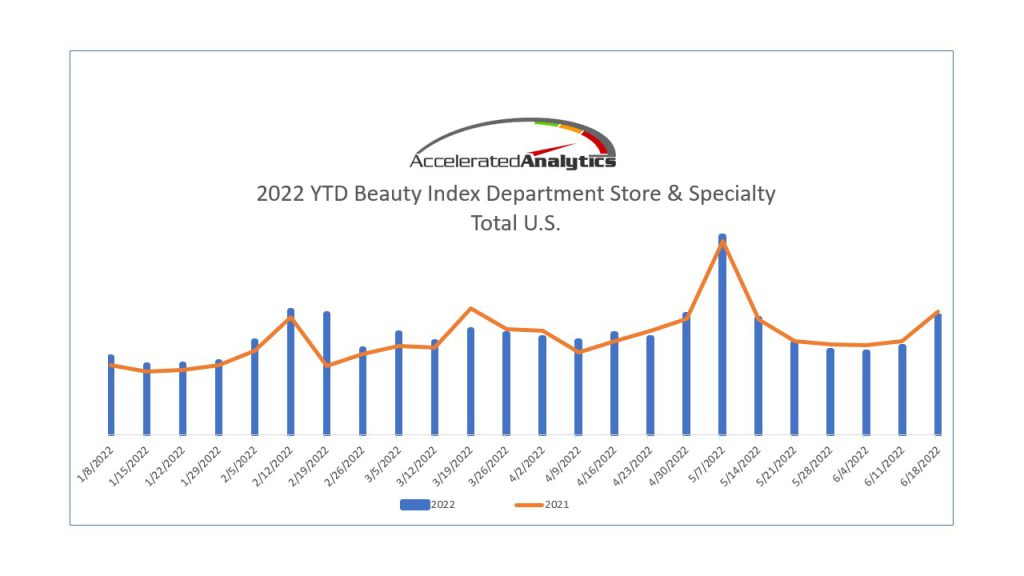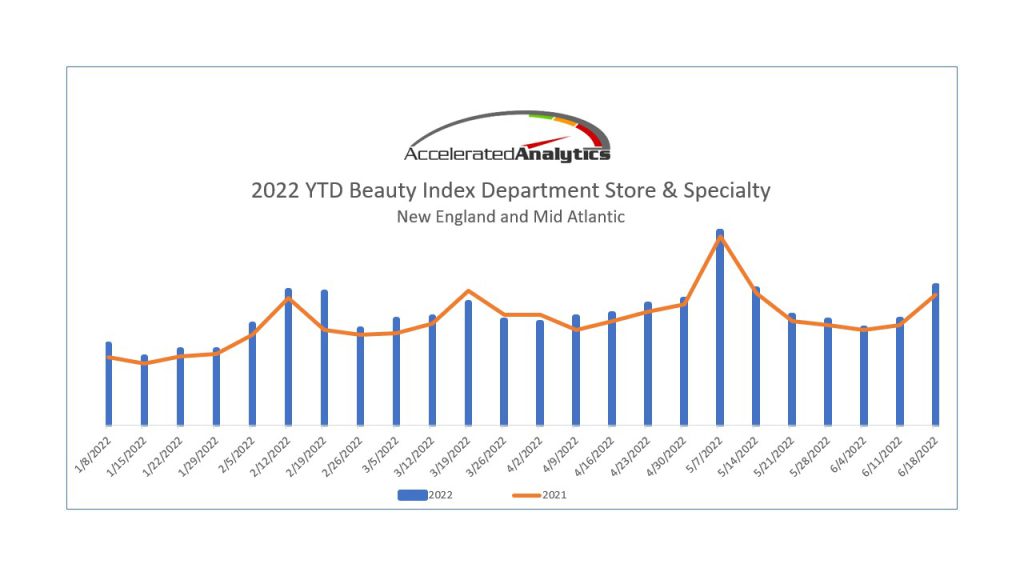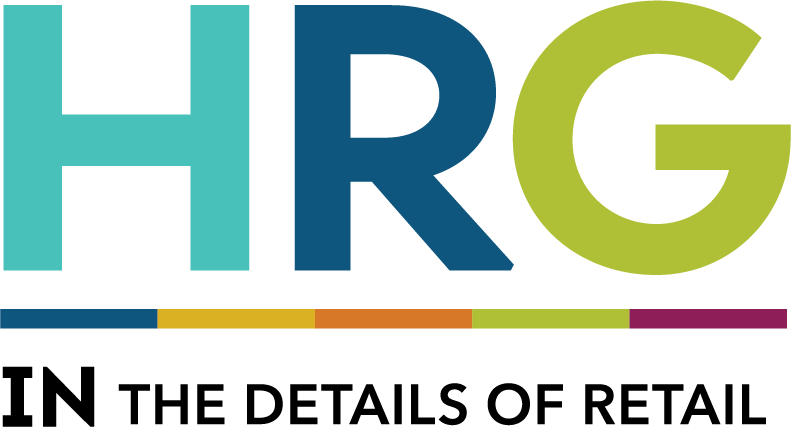by Megan Moyer, corporate marketing manager, as appeared in Inside Beauty for Drug Store News
The beauty segment has had a tumultuous couple of years. The highly-contagious coronavirus forced stay-at-home orders and mask-wearing — two things that hindered the sales of beauty items. At the same time — in the interest of self-care and “normalcy” — consumers sought products to replicate the services they’d normally receive at salons and spas at home, causing a boost in certain categories, such as hair coloring treatments (Source: HRG’s proprietary Tri-PAC™ Data).
Two years into the pandemic, looking at beauty trends thus far in 2022, you can connect several of the trends back to their beginnings in 2020. Chad Symens, president and CEO of Accelerated Analytics, shared three trends he saw in the data they collect, that aligned with what he’s heard in his ongoing conversations with client executives at retailers and beauty manufacturers.
Accelerated Analytics was founded in 2003 and its focus is helping brands improve their sales and inventory management by collecting, harmonizing, and then reporting on retail point of sale data. Symens stated “The beauty segment is a huge focus for our team. We work with brands of all sizes across industry categories.”

The first trend Symens shared was the wellness trend — certainly an element of self-care that has been in sharp focus since the pandemic started. Wellness-centered beauty products were featured in this January 2022 Inside Beauty article.
Read More: Love and makeup in kindness
The second trend that also can be tied to behavior that began accelerating during the pandemic, is at-home indulgence. “We see an interesting trend right now that took off during COVID, when everyone was stuck at home, but it has extended now across some additional product categories,” commented Symens. “We’re seeing things like specialized skin care treatments, prestige hair care, and, in particular, professional-quality, high-price-point grooming tools have really shot up in sales as consumers look to self-indulge and take that salon experience home.”
The third noteworthy trend is a continued emphasis on innovation. Symens said, “I had an opportunity to meet with the Black Girl Sunscreen team recently and they’re having success because they have a highly-differentiated and specialized product line that is very innovative.”
Accelerated Analytics offers a web-based application to track sales data. Users sign into the web portal to access their data and reports. Reports can be organized by use cases, such as product-based sales reports, territory- or store-based sales reports, inventory reports, and more. The company also offers an iOS application, so if clients are doing store walks, they can access the data right on their phone or iPad. Users can also export data to Excel to create their own pivot tables.
“One of the benefits our clients rely on is unlocking and analyzing consumer insights,” commented Symens. “They uncover some interesting patterns with regards to customers and their preferences. They can segment product sales by category and subcategory, innovation versus replenishment, track the impact of promotions, and view the data in a variety of other different ways.”

The primary use of the software is for daily and weekly monitoring of sales, and the creation of presentations to share results with their executive teams or their buyers. What has become of great importance in light of supply chain challenges, is the inventory allocation and stock monitoring reports. “Buyers are very cautious to not overbuy inventory,” Symens said. On an exception basis, clients can monitor inventory allocations from the DC all the way down to stores and individual UPCs at those stores in order to get a very granular view of where there are appropriate levels of inventory, and where there may be under- or overstock. That information can also flow back up the supply chain to help distribution centers forecast and plan production to make sure that they’re going to have sufficient inventory on hand.
Read More: Packaging innovations for sustainability
Another key use of the software is to direct field sales and freelancers. Many brands spend a considerable amount of money to build and manage field sales teams — and may have extensions of freelance teams — who allocate their time to visiting the high-volume stores. Those teams are not inexpensive, so brands want those dollars to be as cost effective as possible. Because the Accelerated software can monitor sales down to the store level, users can easily identify the stores that are the highest priority, how frequently they need a visit, and can even get to the day that works best at the store.
Due to inflation, Symens said he has seen some softness in the beauty category starting in about mid-May, based on year-over-year comps, and an overall decelerating trend continuing in June. The data also shows that lower income consumers in particular have pulled back on their spending pretty rapidly, while higher income consumers have not significantly pulled back and decelerated spending yet.
Symens also noted that prestige priced products across categories, including items like fragrance, are still moving well. “I think the high-price-point professional-level products for self-indulgence at home is driving some of that,” Symens commented. “Going deeper, our data shows negative comps in the last several weeks with the sharpest downtrends being in the East and North Central U.S., followed by the West, and South Central. Conversely, we see positive trends year over year for the New England and Mid Atlantic areas.”
Read More: Capitalizing on cosmetics in grocery
From his ongoing discussions with C-level executives to understand emerging trends, Symens says he expects to see a very conservative approach to the beauty business for at least the second half of the year due primarily to inflation, rising capital costs as the Fed is increasing borrowing rates, and the amount of uncertainty in the market.
Using data and analytics to determine where products are needed and will meet demand, and how to best apply resources is imperative in a challenging economy with ongoing supply chain issues. It’s also essential in planning and forecasting to make reliable projections to meet consumer needs and optimize growth. Using data to measure, inform, and chart a course of action has never been more important.
HRG and Accelerated Analytics collaborate on behalf of clients to optimize opportunities for manufacturers and retailers at shelf, including assortment refinement and optimization and heat mapping.
